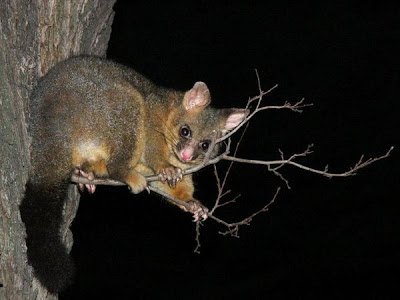 |
| MerinoSnug |
This animal so rapidly proliferate and as a result they need an huge amount of nourishment so if New Zealand want to keep the remaining native species of wildlife .... they need to defend themselves.
The textile industry discovered that possum fur to mix together with other material as example - merino wool - they could create a very new surface for the knitted product.
The result is a hairy surface, soft, mohair-like material.
 |
"The common brushtail possum was introduced to New Zealand by European settlers in an attempt to establish a fur industry. There are no native predators of the possum in New Zealand, so its numbers in New Zealand have risen to the point where it is considered a serious pest. Numerous attempts to eradicate them have been made because of the damage they do to native trees and wildlife, as well as acting as a carrier of bovine tuberculosis. By 2009, these measures had reduced the possum numbers to less than half of the 1980s levels – from around 70 million to around 30 million animals.
Since 1996, possum fur, obtained from about two million wild-caught possums per year, has been used in clothing with blends of fine merino wool with brushtail possum fur – variously known as Ecopossum, Merinomink, possumdown, eco fur or possum wool. Possum fur is also used for fur trim, jackets, bed throws, and possum leather gloves."
Wiki
|
"New Zealand has 3 rat species and each was introduced. The Norway rat, ship rat (black rat) and the kiore (Pacific rat). These eat, birds, chicks, eggs, insects, berries and lizards.
The introduced brushtailed possum population is now estimated at 70 million, yes 70,000,000. More than enough to circle the planet nose to tail. They are estimated to eat 21,000 tonnes per evening. How many trees is that? The brushtailed possum is also a carrier of tuberculosis, which if not controlled, puts our primary export products at risk. The brushtailed possum has been filmed with night capture recording equipment eating baby birds and eggs including those of the endangered North Island kokako. The South Island kokako is now thought to be extinct, but some evidence suggests that there may still be a few left on the West Coast."
The Natural Heritage Collecion
| "Biological control (immunocontraception)will reduce possum breeding. The possums ' own biological systems will be used to interfere with the process by which sperm fertilises the egg. This response will be triggered by proteins that make up part of the coat of the sperm or egg,and will stop female possums producing eggs and/or interfere with the fertilisation of any eggs produced. That way, no or very few baby possums will be born,so possum numbers will decline as the adults die off and there are no young to replace them. The biological control agent based on the sperm or egg proteins will be made into baits and fed to possums from bait stations." LandCare Research Manaaki Whenua |
 |
| WildLife Removal |
 |
| KORU |
 |
| "Save New Zealand forests and bush, proudly wear possum knitwear and garments! Available in a wide range of colours..." NelsonMerino |
 |
| KORU |
 |
| REMAR Knitwear |
 |
| www.souvenirfactoryshop.co.nz |
 |
| Lothlorian knitwear |
 |
| www.wearnewzealand.com |







No comments:
Post a Comment
Note: only a member of this blog may post a comment.